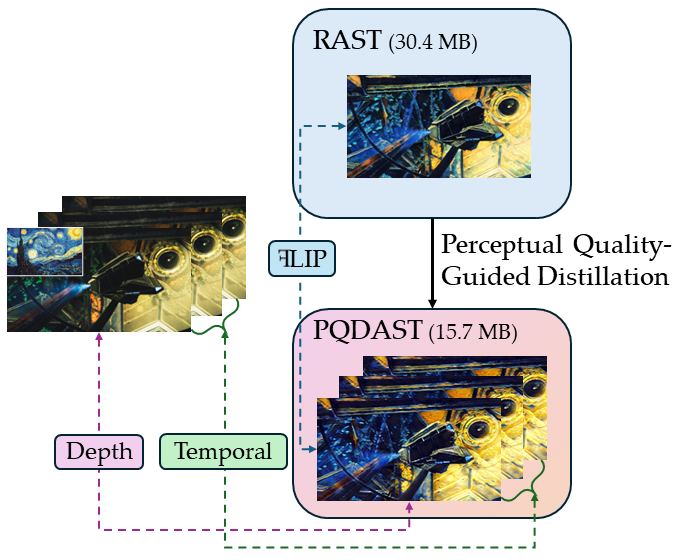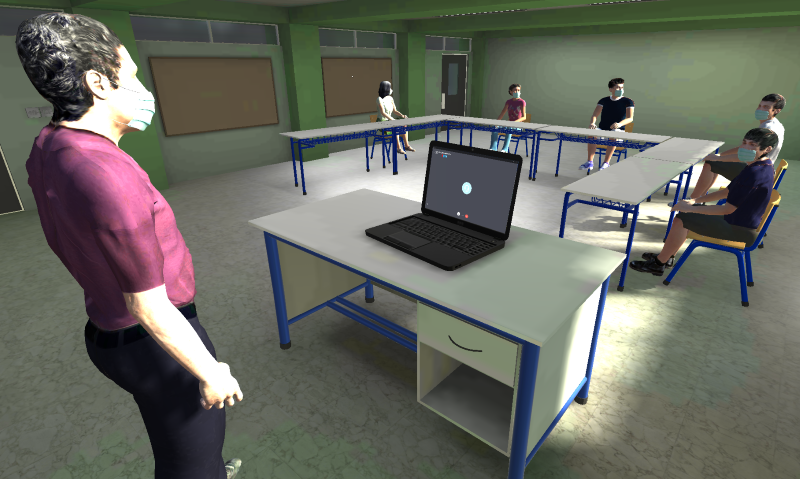|
Eleftherios Ioannou I hold a PhD in Computer Science from the University of Sheffield where I have been a member of the
Computer Vision Research Group.
eioannou06 [at] gmail.com |
|
Current Projects |

|
Unlocking the complexity of organismal colour patterns using artificial intelligence
Adopting a cutting-edge hierarchical semantic segmentation strategy to develop models that are capable of accurately detecting not only a specimen within an image but also of simultaneously segmenting regions within the specimen. Developing a powerful workflow for colour pattern analysis that leverages contrastive learning. |
|
|
After Malaria: Animated Exchanges in Health Heritage
A trandisciplinary multimodal research project in collaboration with Shameru Collective. Combining arts and sciences to explore public health heritage and what lessons can be drawn for application today. |
Publications |

|
Depth-Aware Artistic Neural Style Transfer for Images, Video and Games
Eleftherios Ioannou PhD Thesis, 2024 thesis My research explores the utilization of depth and other data for the improvement of the quality of artistic style transfer models. |

|
A Synthetic Dataset for Semantic Segmentation of Waterbodies in Out-of-Distribution Situations
Eleftherios Ioannou, Sainath Thalatam, Serban Georgescu Scientific Data, 2024 dataset We introduce a new, highly controlled synthetic dataset that encompasses the essential attributes required for analyzing OoD behavior. |

|
PQDAST: Depth-Aware Arbitrary Style Transfer for Games via Perceptual Quality-Guided Knowledge Distillation
Eleftherios Ioannou, Steve Maddock Under Review, 2024 project page / arXiv We use a perceptual quality-guided knowledge distillation framework and train a compressed model inspired by work in image quality assessment of 3D renderings, which substantially reduces both memory usage and processing time with limited impact on stylisation quality. |

|
Evaluation in Neural Style Transfer: A Review
Eleftherios Ioannou, Steve Maddock Computer Graphics Forum, 2024 We provide an in-depth analysis of existing evaluation techniques, identify the inconsistencies and limitations of current evaluation methods, and give recommendations for standardised evaluation practices. |

|
Towards Real-time G-buffer-Guided Style Transfer in Computer Games
Eleftherios Ioannou, Steve Maddock IEEE Transactions on Games, 2024 project page Utilizing G-buffer data enables the stylization process to be more aware of the geometric and semantic aspects of a game scene. G-buffer information utilized during inference time improves the stability of the stylizations, and offers a controllable way to stylize computer games. |

|
Neural Style Transfer for Computer Games
Eleftherios Ioannou, Steve Maddock BMVC, 2023 | Computer Vision for Games & Games for Computer Vision Workshop project page / arXiv We inject depth-aware NST as part of the 3D rendering pipeline. |

|
Depth-aware Neural Style Transfer for Videos
Eleftherios Ioannou, Steve Maddock Computers, 2023 project page A depth encoder network encodes ground-truth depth information which is fused into the stylization network. We employ ConvLSTM layers in the encoder, and a design a loss function based on calculated depth. |

|
Through the eyes of Teachers or Students?
Christos Kyrlitsias, Eleftherios Ioannou, Kalliopi-Evangelia Stavroulia, Despina Michael Grigoriou, Andreas Lanitis CASA, 2023 VRTeacher / poster Empower teacher education using a novel Virtual Reality (VR) based approach. Development made in Unity. |

|
Depth-aware Neural Style Transfer using Instance Normalization
Eleftherios Ioannou, Steve Maddock CGVC, 2022 project page / arXiv Our approach uses a deep residual convolutional network with instance normalization layers that utilizes an advanced depth prediction network to integrate depth preservation as an additional loss function to content and style. |

|
Augmented Reality Cultural Route at the Xeros River Valley, Larnaca, Cyprus
Eleftherios Ioannou, Andreas Lanitis, Athanasios K Vionis, Giorgos Papantoniou, Niki Savvides Euro-Mediterranean Conference, 2020 poster We support the systematic exploration of landscape archaeology through time, from prehistory to today, through the design and development of an Augmented Reality (AR) application. |

|
Breathing life into statues using Augmented Reality
Eleftherios Ioannou, Steve Maddock CGVC, 2020 project page We present an AR art app, running in real time on a smartphone, that can be used to bring to life inanimate objects such as statues. |

|
Arbor Low stone circle in Augmented Reality
Eleftherios Ioannou, Steve Maddock SURE, ICUR, 2019 project page / poster The project produced Augmented Reality (AR) software that allows the users to view the stones standing and interact with them in situ. |
Miscellanea |

|
Shameru
Multi-disciplinary collective of friends, including artists, scientists, and researchers, looking to use technology to synthesise art to address some of the world's most pressing issues.
|

|
Blog Posts
|
|
Code stolen from jonbarron/jonbarron_website. |